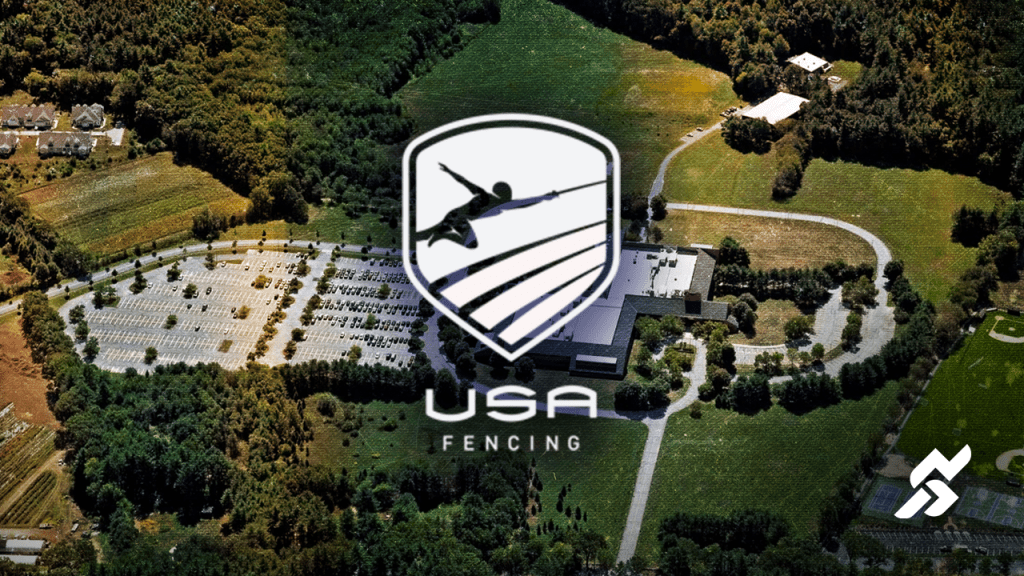USA Fencing is developing a new training center and national academy for the sport outside of Boston, part of wider efforts to strengthen the talent pipeline to elite college programs while boosting its own revenues.
In concert with Masters Academy International (MAI), a boarding school and sports institute backed by private school owner Cognita, the new U.S. National Training Center in Stow, Mass., will be a comprehensive academy for the national sports governing body. Planned to open in the fall of 2026 as part of a $56 million redevelopment project, the new venue will feature expansive fencing halls, recovery suites, weight training, outdoor space and on-site dorms.
Phil Andrews, the CEO of USA Fencing, said that the new academy and training center will “tick a lot of boxes” when it comes to not only enhancing academic and athletic performance in young fencers, but also generating revenue in an Olympic/Paralympic sport.
“The ability to do camps, both for our national teams, but also revenue camps, where you can bring in folks to have that experience, adds to our ability to have a home base and have more come to us than we may have had without it,” he said in a video interview.
Located 21 miles outside of Boston, the new academy will bring the national governing body closer to Ivy League and other academically prestigious schools that many young fencers seek to attend, especially Harvard, MIT, Boston College and Brandeis. Those four Boston-area schools have high-ranked fencing programs for both men and women.
USA Fencing considered two other locations: one in Bradenton, Fla., home to the IMG Academy, which the new facility is modeled after, and one near New York City, which the body considers its most active market. The Stow package, however, included some tax incentives for MAI from the state of Massachusetts that made it a more attractive option, according to Andrews.
The academy/training center may help the sport survive in the post-House settlement world. In the wake of the antitrust cases, some colleges are likely to reconsider their support of Olympic sports. The fear is schools leaning heavily on football and college basketball will be inclined to spend most of their newly required revenue-sharing payments on football and hoops, potentially gutting other programs like fencing in the process.
But Andrews believes that for some universities, the House settlement coupled with a long-anticipated demographics-driven drop in student enrollment could make football and basketball more cost-prohibitive than other sports.
“If my brand identity is not necessarily tied to [football or basketball], should I necessarily be keeping these sports?” he said. “Or should I be looking at alternative sports, whether that be fencing or other sports … that have opportunities to achieve net contribution to my university that I may not be getting from football or basketball?”
The academy can provide budding elite fencers with rigorous academics while maintaining a path to colleges that maintain their fencing programs, as well as those that are considering reallocating their athletic budgets away from football to less costly Olympic sports.
For now, all eight Ivy League universities have declined to participate in the House settlement’s optional revenue-sharing, and aren’t faced with cutting fencing or football. Yet schools like Notre Dame, Ohio State and Northwestern may consider trimming rosters of their elite fencing teams to ensure they can pay their athletes in the revenue-generating sports.
“There may also be universities at the opposite end of the spectrum going, ‘I really need to keep my football program because it’s fundamentally integral to my university’s identity, and therefore, how do I now find the money to run that program that I didn’t used to need to find?’”
According to its most recent financial statement, for the fiscal year ending in July 2024 USA Fencing has drawn $17.3 million in total support and revenue, with most of the money coming from registration fees ($8.8 million), membership dues ($2.7 million) and contributed nonfinancial assets such as tournament equipment, air travel, and room and board ($1.1 million).
In March, USA Fencing was among five U.S. sports national governing bodies that announced they will pool their commercial and media rights under a new collective.
USA Fencing has almost 50,000 members, most of them high-school age. The national and international programs along with membership services account for $12.5 million of its $16.7 million in total expenses. Combined with recently restated net assets from consolidating its philanthropic arm, the U.S. Fencing Foundation, in 2023, USA Fencing has $4.3 million in net assets.
The consolidation of the foundation was part of an overall restructuring of the NGB when Andrews came on board in 2022. USA Fencing now sees itself as “an events company in sheep’s clothing,” according to Andrews, with 11 national and international events in the U.S. along with 137 regional events and over 1,000 local events.
